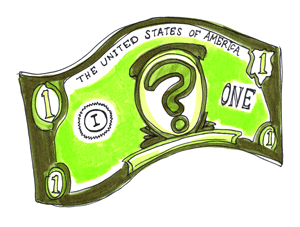The staff editorial is the majority opinion of The Murray State News Editorial Board.

Secretary of the Treasury Jacob J. Lew announced April 20 that Harriet Tubman will replace Andrew Jackson on the $20 bill.
There’s just one small catch: Jackson won’t actually be removed.
Jackson – a slave owner infamous for his involvement in the Trail of Tears and, ironically, his opposition to a national bank system – will be bumped to the back of the bill alongside an image of the White House. The image of Tubman, who led hundreds of slaves to freedom through the Underground Railroad, will rest on the face of the bill.
Former slave and abolitionist on one side, slave owner on the other – what could be a more troubling representation of American history?
It seems as if the bill is the perfect reflection of how the American government has dealt with appeasing minorities. Consider the complex way that slaves came to freedom in the U.S., through state-specific laws, caveats and conditions leading up to the ratification of the 13th Amendment in 1865.
Jackson’s presence on the bill is a material symbol of the lasting bonds of oppression – a haunting reminder that, though our wrongdoings can be written over or covered up, they cannot be erased. But is it justified? Is the dichotomy of master and slave, man and woman, oppressor and oppressed supposed to dress or reopen wounds?
These are questions that may be answered only through public reaction when the bills go into circulation. The new designs, which include revisions of the $5 and $10 bills as well, won’t be released until 2020, with circulation to begin later in the decade.
The $5 and $10 will feature multiple women and civil rights leaders. The former will display Marian Anderson, Eleanor Roosevelt and the Rev. Martin Luther King Jr. on the back with Abraham Lincoln remaining on the front. The latter will spotlight five leaders of the women’s suffrage movement: Sojourner Truth, Lucretia Mott, Susan B. Anthony, Elizabeth Cady Stanton and Alice Paul.
While the new additions are certainly a token of progress for women and people of color, they’ve raised a frightening concern that some citizens won’t know the figures in their wallets.
We conducted a poll to see how many Murray State students learned about Sojourner Truth in school. While 50 percent said they learned about the abolitionist in high school, 2 percent said they learned about her in college. Twenty-five percent didn’t cover Truth in either high school or college, and 22 percent answered, “I don’t know who this is.”
If that data is any indication of how American citizens are absorbing our history, hopefully the new bills will serve as educational tools, not sources of conflict or distress.
Unfortunately, we’ve already seen ignorance seep into arguments against the new designs; some have protested Tubman’s image because she isn’t a president. Cue: Ben Franklin.
It’s understandable for citizens to oppose the bills because of ideological conflicts with the figures represented – after all, that’s precisely why Jackson is taking a back seat. But if we don’t know the figures at all or have any context for the causes they fought for, the blood they shed or the hate they suffered, that’s deeper than a change of aesthetics. More than new currency, we need new conversations.
The people printed on our currency shouldn’t be ghosts of history to be passed off and crumpled absentmindedly. They shouldn’t be one-dimensional.
When the new bills are printed, don’t let those faces and names become loose change in your pocket – learn the names. Know their stories. Consider the cost of those faces. Do you know who paid your bill?